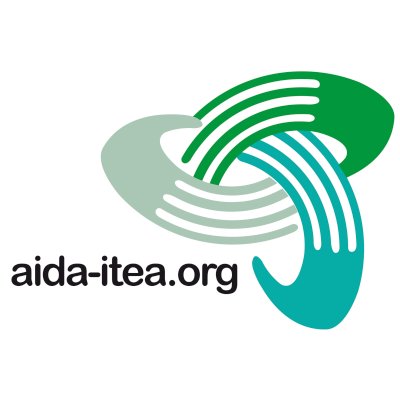Location
La Asociación Interprofesional para el Desarrollo Agrario (AIDA) es una asociación sin ánimo de lucro, abierta a todos los profesionales del sector técnico, social y económico agrario. La Asociación no persigue fines lucrativos ni políticos, sino de interés social y técnico en el campo agrario.
La Asociación se creó el 5 de octubre de 1967, aunque no es hasta 1973 cuando adopta el nombre de Asociación Interprofesional para el Desarrollo Agrario. En su origen era la Asociación de Técnicos Diplomados por el Centro de Investigación y Desarrollo Agrario del Ebro (CIDADE). Nace con la finalidad de crear un medio para facilitar la difusión y el intercambio de conocimientos, para dar ayuda profesional entre los asociados, así como contribuir al avance científico y técnico del sector agrario.
En la actualidad se mantienen estos fines, consiguiendo esta difusión a través de la organización periódica de Jornadas, Jornadas sobre Producción Animal los años impares y Jornadas sobre Producción Vegetal los años pares, donde se presentan comunicaciones y los profesionales comparten sus conocimientos e inquietudes.
AIDA edita la revista ITEA-Información Técnica Económica Agraria, que aparece indexada en las bases de datos de revistas científicas más importantes (SCI Expanded, Journal Citation Reports/Science Editions, ICYT, CABI y Scopus) y que en la actualidad se encuentra accesible en open-access.
En la actualidad la Asociación cuenta con unos 300 socios
Fines de la asociación
La Asociación persigue los siguientes fines:
- Proporcionar a los asociados toda la información y ayuda profesional que puedan serles útiles.
- La publicación de una revista periódica denominada ITEA-Información Técnica Económica Agraria.
- Facilitar a los asociados los contactos entre sí y con las diferentes instituciones a las que pertenecen.
- Organizar periódicamente unas Jornadas de Estudio, así como la coordinación o participación en conferencias, coloquios, seminarios, mesas redondas y demás manifestaciones que puedan interesar a los asociados para perfeccionar su formación profesional.
- Orientar, desarrollar y apoyar toda clase de iniciativas que puedan ayudar al desarrollo técnico, económico y social agrario.
- Cualesquiera otros fines lícitos que puedan considerarse de interés para los asociados dentro del espíritu que inspira la constitución de esta Asociación.
Members:
Resources
Displaying 6 - 10 of 14Productive characteristics, carcass quality and intramuscular fat from the Tudanca breed beef
Thirty three male tudanca young bulls were used to evaluate 2 production systems (intensive and semiextensive) and 2 slaughter ages (12 and 14 months). Although there were differences in the average daily gains along the finishing period between groups, no differences were observed in conformation score. In contrast, production system affected fatness score. Semiextensive feed animals slaughtered at 12 months of age presented values of fatness scores lower than other groups (p
Influence of lactation system on kids carcass quality from Murciano-Granadina and Malagueña breeds
In dairy goat breeds, kids are a subproduct, hence they were weaned as soon as possible. The aim of the present work was to study the influence of lactation system on carcass quality of the two main dairy Spanish goat breeds. Present work is part of a large Project whose objective is the characterisation of the carcass and meat from 7 Spanish goat breeds. Thirty kids, 15 per breed, were slaughtered at 4,5 kg, including head and offal. Half of them were fed with natural milk, the other half with artificial milk.
Productive parameters of Ojinegra of Teruel breed in differents breeding seasons: preliminary results
8 flocks of Ojinegra ewes (n=5634) were studied during a productive cycle (2007-2008) in Teruel (Spain), a low-mountain dry and harsh area. Ojinegra ewes belong to a local breed, of small-medium size, reared under a semi-extensive system of management. Throughout three seasons (autumn, winter and spring) weight and BCS of 5634 ewes at lambing and weaning were recorded and 5786 lambs were weighed fortnightly form birth to weaning. Season had a significant (p>0.01) effect on weight and BCS of ewes and on lambs average daily gain.
Characterization of two fattening system of race Burguete colts: lechales and quincenos
At present the Race Burguete is regarded as Breed in danger of extinction. The products marketed can be classified in Lechal (the colt once weaned enters the fattener) and Quinceno (foals that once weaned remain several months at grazing and around 15 months of age are fattening). The aim of this work is to characterize both systems of production and to obtain data on the behaviour of the race in order to advise farmers belonging to the association. A total of 22 Burguete colts, 12 lechales and 10 quincenos, were slaughtered. Both cases included males and females.
Preliminary characterization of "Parda de Montaña" beef cattle farms in Aragón [Spain]
A survey that gathered information about farm structure, grazing system, feeding and reproductive management was conducted in 181 farms. Parda de Montaña is the main breed regarding cows (92.4%), heifers (95,3%) and calves (84,1%). Bulls belong to Parda de Montaña (65%) breed but also Limusine, Charolaise and Blonde d'Aquitaine. Farms had an average size of 53.6 cows. Feeding depends largely on grazing in different forage resources, from June to October in high mountain ranges, in spring and autumn in natural meadows and forage crops.


